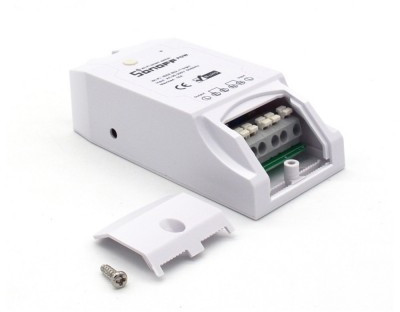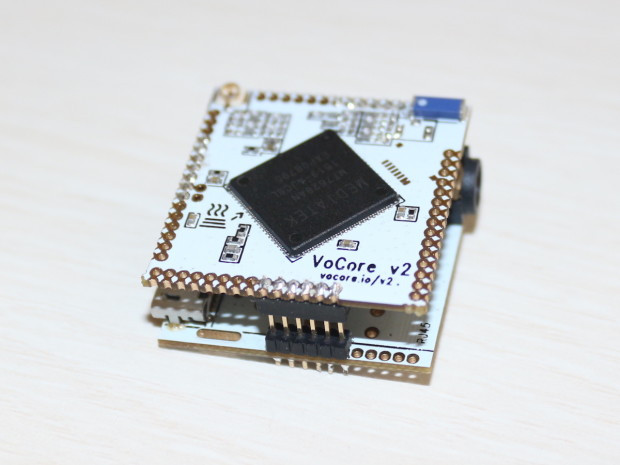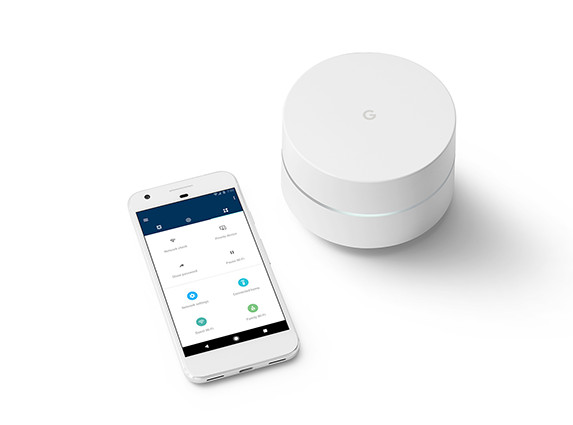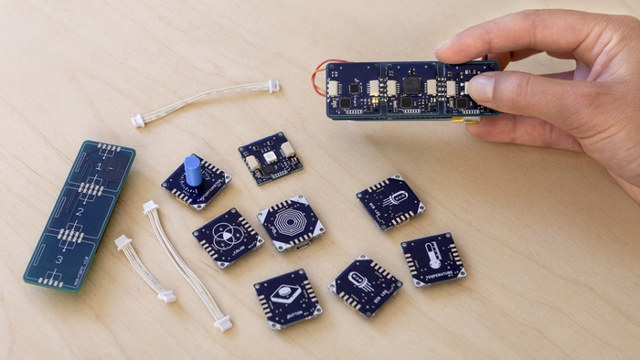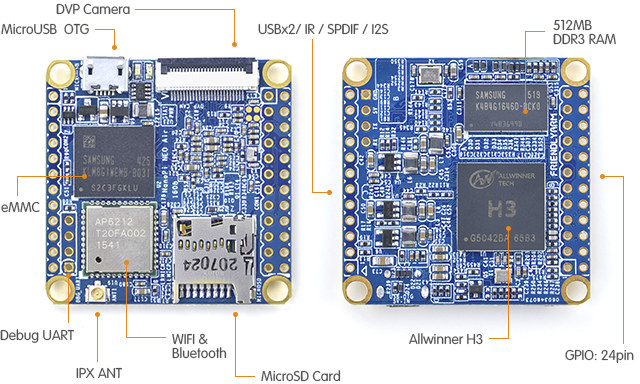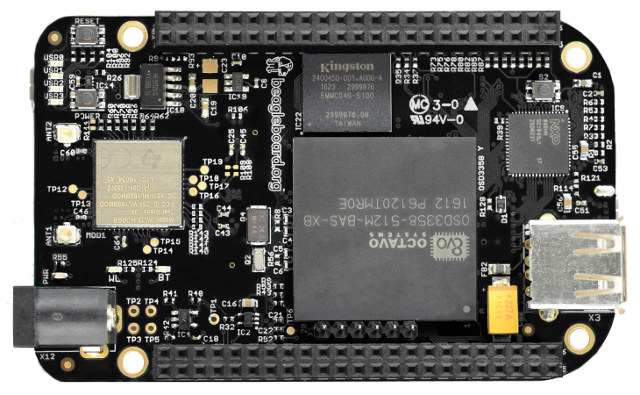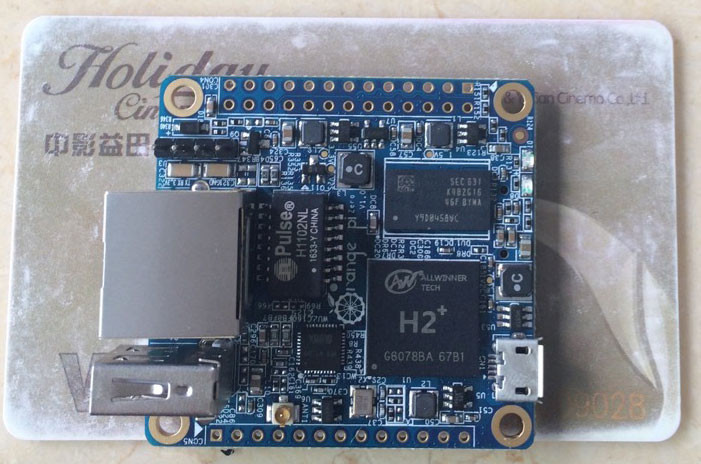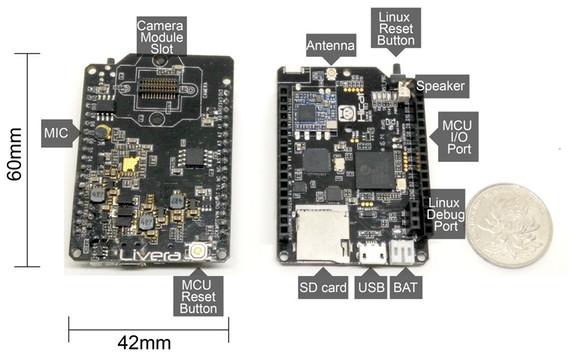In a recent article about Sonoff TH10/TH16 WiFi relays with sensor probes support, we also saw that ITEAD Studio started to have a nice family of home automation products. The company has now added one more item to the Sonoff family with Sonoff Pow support up to 16A/3500W input, and the first to also include power consumption measurements. Sonoff Pow specifications: SoC – Espressif ESP8266 Tensila L106 32-bit MCU up to 80/160 MHz with WiFi Connectivity – 802.11 b/g/n WiFi with WPA/WPA2 support Relay – HF152F-T relay with 90 to 250 VAC input, up to 16A (3500 Watts) Terminals – 6 terminal for mains and load’s ground, live and neutral signals. Programming – Unpopulated 4-pin header for flashing external firmware Misc – LEDs for power and WiFi status, power consumption circuitry with 1% accuracy. Dimensions – 114 x 52 x 32mm Temperature range – -40 ℃ to 125 ℃ The […]
VoCore2 WiFi IoT Board Launched with Audio, PoE & “Ultimate” Docks (Crowdfunding)
Vocore WiFi IoT board was popular at its launch in 2014 because affordable WiFi boards with I/Os were not common at the time, and it came with an Ethernet dock making it a complete router within a tiny and cute cube. The developers have been working on VoCore2 (aka Vocore V2) with a faster processor, more memory, a lower power consumption, a better WiFi signal, and more I/Os for several months, and have now launched the board on Indiegogo aiming to raise at least $6,000 for mass production. Vocore2 board specifications: SoC – Mediatek MT7628AN MIPS processor @ 580 MHz System Memory – 128 MB DDR2 Storage – 16MB NOR FLASH, 1x SDXC via I/O pins Connectivity WiFi 802.11n 2T2R up to 300 Mbps with either 2 u.FL connector or 1 u.FL connector + on-board chip antenna (Max signal output >19.5dbm peak) 2x 10/100M Ethernet interfaces via I/O pins I/Os […]
Two More Google Products: Google WiFi Mesh Router, and Google Home, an Amazon Echo Competitor
Google made a bunch a new product announcements with their Pixel phones, Daydream View VR headset, and Chromecast Ultra 4K dongle, but in this post I’ll write about two other new products: Google Home an Amazon Echo competitor powered by Google Assistant and supporting multi-room, as well as Google WiFi (Mesh) router aiming at providing WiFi all over the house by combining multiple WiFi routers. Google WiFi Router Most households now use a single router to provide WiFi to the home, but inevitably this introduce some dead or “slow WiFi” zones within the house. One way to work around this is to use WiFi repeaters, but it’s not always easy to setup and may lead to lower bandwidth. Google WiFi router uses a technology called mesh WiFi, where each router work together to determine the best path for your data using Network Assist technology to automatically choose and update the […]
Arduino Has Launched ESLOV IoT Invention Kit on Kickstarter
Arduino LLC has just launched its very first Kickstater campaign with ESLOV IoT Invention Kit combines a WiFI board and modules, a visual code editor, and Arduino Cloud. The goal of the project is to let people connect devices to the cloud without needing any programming skills, although the Arduino IDE can still be used for more advanced users. The brain of the project is ESLOV Wireless & Motion Hub: MCU – Microchip (previously Atmel) SAMD21 ARM Cortex-M0+ micro-controller @ 48 MHz with 32KB RAM, 256 KB flash Connectivity – Wi-Fi 802.11 b/g/n USB – 1x micro USB port for programming and power Sensor – One motion sensor Expansion – 5-pin ESLOV connector based on I2C protocol plus a multifunction pin for wakeup, IRQ, and discovery The ESLOV hub would then connect to tiny (2.5 x 2.5cm) ESLOV modules based on Atmega ATmega328P MCU, and communicating through the ESLOV protocol. […]
FriendlyARM Introduces NanoPi NEO AIR Board with WiFi & BLE, Camera Interface and 8GB Storage for $17.99
FriendlyARM launched NanoPi NEO board with Allwinner H3 processor, Ethernet, and USB ports for $7.99 to $9.99 in July, and the company is back with a new board with the same form factor and processor, by trading Ethernet for WiFi, dropping one USB 2.0 port for a DVP camera interface, and adding an 8GB eMMC flash. NanoPi NEO AIR specifications: SoC – Allwinner H3 quad-core Cortex A7 @ 1.2 GHz with an ARM Mali-400MP2 GPU up to 600 MHz System Memory – 512 MB DDR3 Storage – 8GB eMMC Flash (Samsung) + micro SD card slot Connectivity – WiFi 802.11 b/g/n and Bluetooth 4.0 LE (via Ampak AP6212 module) with IPEX antenna connector USB – 1x micro USB OTG port, 2x USB via headers Camera – 1x DVP camera interface with optional 5MP CAM500B camera Expansion headers 24-pin header with I2C, 2x UART, SPI, PWM, and power signals 12-pin header […]
BeagleBone Black Wireless Board Gets WiFi and Bluetooth 4.1 LE, Drops Ethernet
The BeagleBone Black is still one of the most popular development boards around, but in a world going more and more wireless, it only comes with a wired Ethernet interface. Seeed Studio BeagleBone Green Wireless and Neuromeka BeagleBone Air already provided BeagleBone compatible boards with WiFi and Bluetooth LE, as well as Zigbee for the latter, but now BeagleBoard.org themselves have launched BeagleBone Black Wireless with WiFi and Bluetooth 4.1 LE based on Octavo Systems OSD3358 System-in-Package with Texas Instrument Sitara AM3358 processor, 512 MB RAM, TI LDO and PMIC, and many passive components. BeagleBone Black Wireless specifications: SoC – Texas Instruments Sitara AM3358 Cortex A8 @ 1 GHz with PowerVR SGX530 GPU System Memory – 512 MB DDR3L Storage – 4GB eMMC flash + micro SD slot USB – 1x mini USB client port for power & communication, 1x USB host port Connectivity – 802.11 b/g/n WiFi + Bluetooth […]
Orange Pi Zero and Orange Pi i96 96Boards IoT Edition Boards Coming Soon
Shenzhen Xunlong Orange Pi boards are relatively popular thanks to their low price, and support on communities such as Armbian, but two new upcoming Orange Pi boards might make the company even more relevant in the development board space. First, the company is nearing completion of the tiny, and hopefully ultra cheap, Orange Pi Zero board with Allwinner H2+ processor, and Linaro has announced that an Orange Pi i96 boards compliant with 96Board IoT specifications is also coming soon. Orange Pi Zero The board has not been released, but some pictures have been uploaded to Armbian forums. Orange Pi Zero looks quite similar to NanoPi NEO board but with different processor, a slightly larger form factor, and both Ethernet and wireless connectivity. We don;t have other information for now, but it still possible to get most of Orange Pi Zero specifications from the photos: SoC – Allwinner H2(+) quad core […]
HICAT.Livera Machine Vision Board and Robot Kit Feature HiSilicon Hi3518 SoC (Crowdfunding)
HiSilicon Hi3518 ARM9 processor is mostly being used in IP cameras, but Hicat startup decided to combined the camera processor with an Atmel MCU and a MT7601 WiFi module to create a wireless camera board to be used with OpenCV, and even provide a complete affordable robot kit with the board. Hicat.livera board specifications: Vision Core – Hisilicon Hi3518 ARM9 processor @ 440 MHz Storage – 16MB flash + micro SD card MCU – Atmel ATmega32U4 AVR micro-controller Connectivity – 802.11 b/g/n WiFi via Mediatek MT7601 module + u.FL antenna connector Camera interface with provided 140 deg. camera using Omnivision OV9712 720p (1280×720) sensor USB – 1x micro USB port for power and programming Audio – Built-in microphone, speaker header Sensors – MPU6050 accelerometer and gyro Expansion – 2x GPIO headers with GPIOs, I2C, SPI, serial, PWM, digital, analog and power signals. Misc – MCU reset and Linux reset buttons, […]


